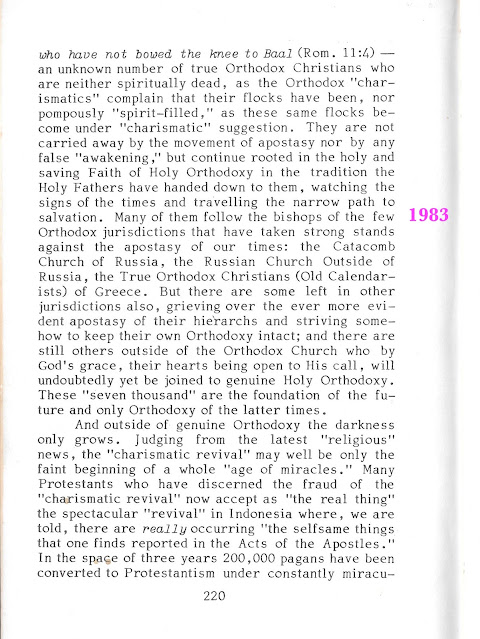ISBN 0-938635-34-4
This book is easily found in many book stores for a fair price.
excerpt from page 36
Q: If a man living in the world is not to take pleasure in the good things of this age, then why has God produced so many beautiful things on earth? I can not understand how God, being One, has given us two commandments so totally at variance. According to one commandment, everything on earth is beautiful. Everything that He created good He gives for food and our use, and to that end, everything was created exceedingly good. But, according to the other commandment, He requires of man fasting and continence. I ask you, Your Reverence, explain this to me and resolve my perplexity.
A: Why speak and interpret these mysteries hidden from us? God cannot be unjust, and whatever He says in His omniscience, He says truly. Our task is to obey the truth without contradiction. These two commandments were given even in Paradise. — And God commanded Adam saying, Of every tree in paradise thou mayest eat; but of the tree of the knowledge of good and evil, thou shalt not eat of it: for in the day that thou eatest thereof, thou shalt surely die the death (Gen 2:16–17)
It is apparent that fasting is akin to man's nature. But, if — out of need of fasting — God did not will to create in such abundance all the goods of the earth, then fasting would be involuntary for everyone. Thus one should think that the abundance of the good things of the earth is not for delight but for the perfection of fasting, God did not will an involuntary fast, but wished that we — in the midst of this abundance — not only remain continent but also fast according to our own will out of love for Him, as handed down by the Holy Church. For obedience to this law He has promised us in reward — health of body and salvation of soul; and, for disobedience — death. If, at the same time, abundance were not given to the earth, then what kind of consolation could there be for the weak, those sick in body, the aged, and infants? For their sake, God has no confined us all to want, but has been pleased that our abundance can fulfill the requirement of each.
HEALTH OF BODY
Something in Elder Theodore's counsel that folks will overlook:
". . . He has promised us in reward — health of body and salvation of soul . . ."
Look into the work of these physicians/surgeons/cardiaologists/internists: Caldwell Esselstyn, John McDougall, Dean Ornish, Michael Greger, Neal Barnard, Colin Campbell, Joel Fuhrman, Michel Klaper, Joel Kahn, Michelle McMacken, Garth Davis, Gemma Newman, Brooke Goldner, Milton Mills, Alan Goldhamer.
Notice how closely, nearly perfectly, the original fasting rules of our Church align with the diet that is more and more being prescribed to prevent many cancers and to CURE 100% some terrible diseases: type II diabetes, heart attack, stroke.
The original fasting rules mean:
1. "no olive oil" means no any-kind of oil.
2. moderation means no over-eating, including on feast days.
3. no "secret eating" includes between meal snacks and nibbling while cooking.
4. simple fare, (no processed foods)
This means no fake meats or fake dairy. Plant-milk is the exception. There is one soy milk brand (Pacific) so minimally processed it has only 3 ingredients: water, soy beans, sea salt. Most of the plant-milks, though, add vitamins. See what Dr. John McDougall has to say about supplements — he especially warns how easy it is to overdose on calcium and vitamin D, even prescribed doses are too high.














